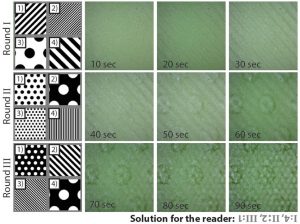Can biotechnology produce games? The BioGraphr project attemps to prove exactly that #BioticGames
Biotechnology has made huge advances in the last few years, and this huge scientific revolution has inspired scientists to create devices and computers that facilitate human-biology interaction (HBI). Cloud-based biology labs are already a reality, and there are many innovative projects attempting to merge biology, computers and users on various levels. Should, however, the contributions of biotechnology be limited to a strictly academic and scientific level? A group of researchers at the Department of Bioengineering at Stanford University decided that it doesn’t have to: Biotechnology was used to create a new type of game, a biotic game: BioGraphr.
You might already be wondering, what exactly is a biotic game? And how is it even possible? Well, the idea behind it is actually simple: Using photosensitive bacteria under a light projector would probably cause them to react to the light stimuli by creating interesting patters. Apply this principle to gaming, and the result is a tabletop interactive gaming system, allowing both single and multiplayer gameplay, and taking advantageof simple, basic biological principles.
The gaming platform developed by the researchers consistsof a mini-aquarium full of over a million microorganism cells, Euglena gracilis cells. A conventional Samsung touch-screen tablet was used to provide an interface for the user to interact with the device, and a projector was used to provide the light stimulus necessary to activate the cells. This way, the user was able to interact with the bacteria in the mini-aquarium in a very simple way.
 The BioGraphr project aimed at highlighting general principles for human-biology design, promote informal science education and explore applications for artistic expression and scientific inquiry. It explored the opportunities and limits of biotechnology and its applications, while simultaneously trying to create meaningful games. The player’s experience allowed them to develop interest for the game’s underlying ‘biological mechanics’ and could possibly generate interest for education, art or computation.
The BioGraphr project aimed at highlighting general principles for human-biology design, promote informal science education and explore applications for artistic expression and scientific inquiry. It explored the opportunities and limits of biotechnology and its applications, while simultaneously trying to create meaningful games. The player’s experience allowed them to develop interest for the game’s underlying ‘biological mechanics’ and could possibly generate interest for education, art or computation.
The mechanics of the game are pattern-based: In both single and multiplayer versions, it consists of patters being projected onto the Euglena aquarium to create different patters with dots and stripes. The players are required to take a guess at which pattern is produced every time, which is not as easy as it sounds: timing is important! There is also the possibility of freehand drawing, as illustrated in the following video:
The innovative device allowed players to experiment with differe nt aspects of biotechnology, and raised interesting questions: for example, someone might ask, is this more a computer rather than a biophysical process?
nt aspects of biotechnology, and raised interesting questions: for example, someone might ask, is this more a computer rather than a biophysical process?
In any case, BioGraphr demonstrates very well how creativity can be used with science and how the world of games is expanding exponentially, just like modern technology. One cannot help but wonder what else might be developed in the future.
Original Article: http://www.digra.org/wp-content/uploads/digital-library/paper_187_revised.pdf
You might also like
More from Game Research Highlights
How do you want to do this? – A look into the therapeutic uses of role-playing games
Can playing RPGs contribute positively to your wellbeing? A recent study aims to find out how RPGs are being used …
Eldritch horrors and tentacles – Defining what “Lovecraftian” is in games
H.P. Lovecrafts legacy lives today in the shared world of Cthulhu Mythos and its iconic monsters. Prema Arasu defines the …
Are Souls Games the Contemporary Myths?
Dom Ford’s Approaching FromSoftware’s Souls Games as Myth reveals the Souls series as a modern mythology where gods fall, desires …














